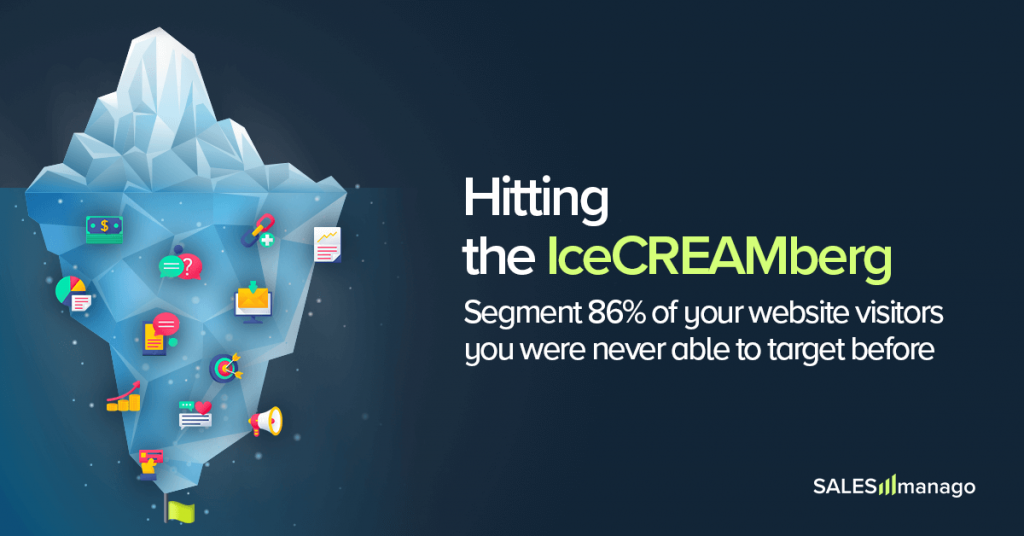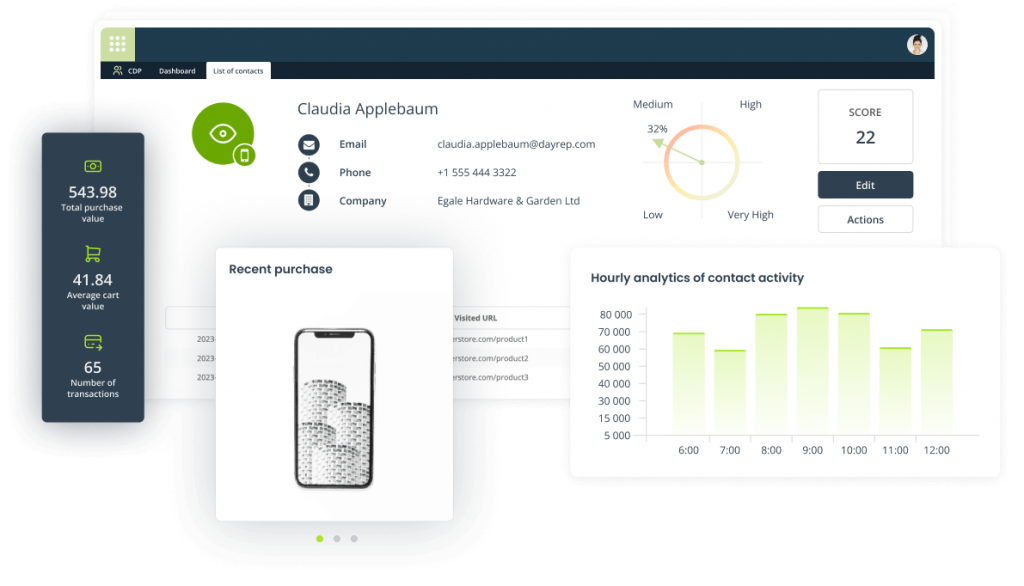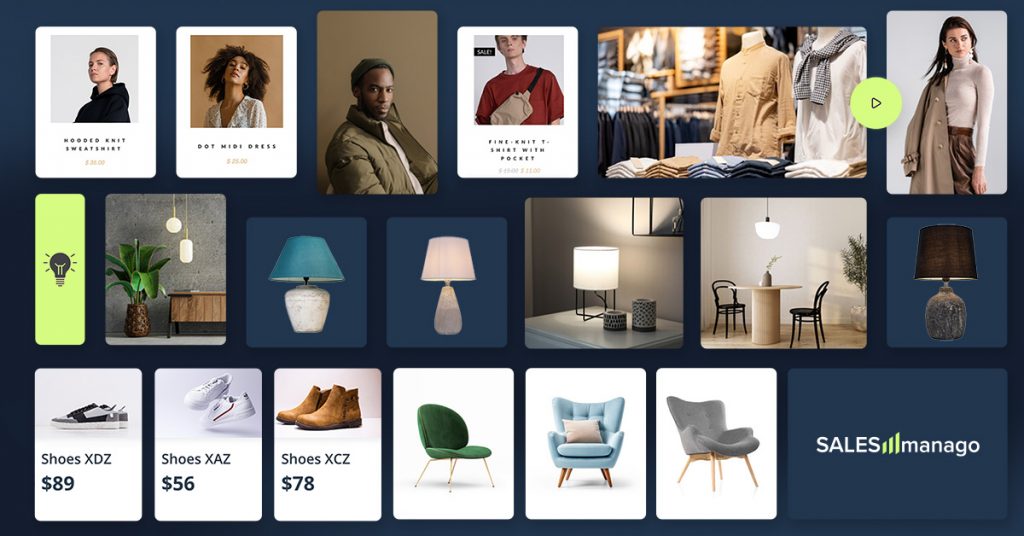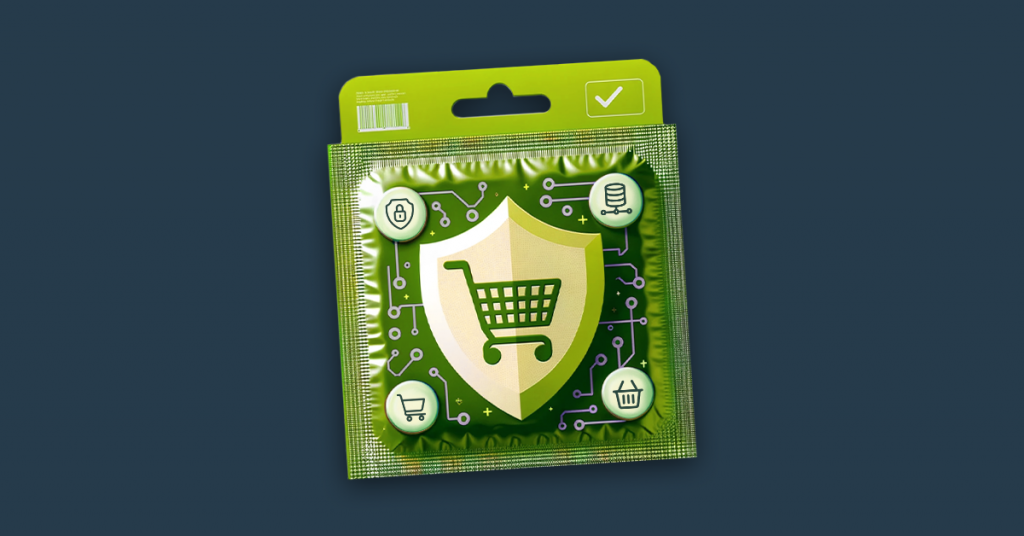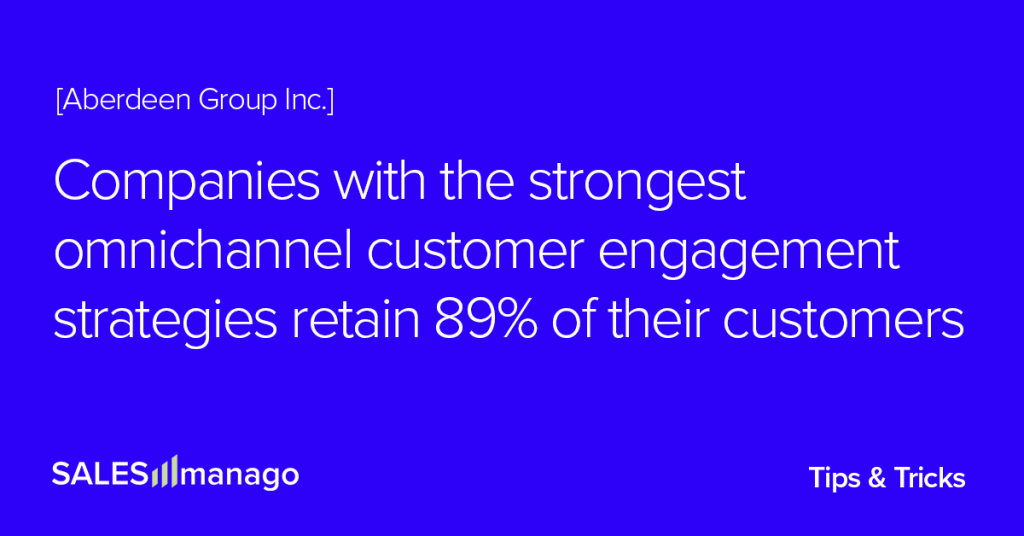
Building an omnichannel experience is slowly becoming the market standard in e-commerce. One of the premises of this trend is to create a consistent experience in all channels and throughout all touch points between the customer and the brand. One of the most useful tools in the implementation of this idea is dynamic content connected to the CDP platform engine. Keep reading to learn the secrets of Omnichannel excellence.
Fifteen years ago the average consumer typically used two touch-points (any time a prospect or customer comes in contact with your brand along the purchase path) when buying an item, and only 7% regularly used more than four. Today consumers use an average of almost six touch-points with nearly 50% regularly using more than four (Marketing Week). This gradual shift in habits is forcing a change in the perception of digital marketing. Simply communicating and interacting with customers across multiple channels is no longer enough to win and retain customers.
- 71% of consumers feel frustrated when a shopping experience is impersonal. — Segment
- 70% of millennials are frustrated with brands sending irrelevant emails. — SmarterHQ
- 74% of customers feel frustrated when website content is not personalized. — Instapage
Dynamic content is a very powerful tool when it comes to personalizing the shopping experience. Various studies confirm this.
- 65% of email marketers say dynamic content is their most effective personalization tactic. — Instapage
- 80% of frequent shoppers only buy from brands that personalize their experience. — Epsilon
- 56% of online shoppers are more likely to return to a site that recommends products. — Invesp
It has a major impact on the quality of your customer base. According to Aberdeen Group Inc. companies with the strongest omnichannel customer engagement strategies retain 89% of their customers on average, compared to 33% for companies with weak omnichannel strategies.
What is a true omnichannel?
Omnichannel is a consistent consumer experience across several or all communication channels used by a brand. The term omnichannel was coined to differentiate between a multichannel experience, which is communication with a customer across multiple channels, and an in-depth experience that incorporates a user’s behavior at various touchpoints with a brand.
Why does the omnichannel experience require dynamic content?
From the very description of omnichannel, it’s clear that it will be a highly personalized experience — different for each viewer. And since there are hundreds, thousands of customers browsing through stores every day, it would be difficult to predict each purchase path separately. Therefore, a great help in building a consistent customer experience can be content that will adapt itself to their actions and preferences. Let’s start with the basics.
What is dynamic content?
Simply put, it is content that changes in response to specific behaviors even though the medium in which it is delivered (website, email, advertising medium) remains the same. An example of such content can be the language of Web Push notifications, which automatically adjusts to the language of the browser set by the user. It could also be a banner on a page that will display content tailored to the user’s interests (for example, based on the viewed/liked products). In this case, the URL is the same for everyone, while the homepage changes its appearance for individual visitors.
Types of dynamic content
Dynamic content is a fairly broad term that can describe many types of content. As technology advances, the list grows. Today, the most popular dynamic content types include:
- Page language that adapts to the browser language
- Emails
- Email recommendations
- Web push notifications
- WhattsApp notifications
- Text messages
- Messenger content
- Landing pages
- Live chat recommendations
- Banners
- Recommendation frames
- Contact forms
- Social proof widgets
- Pop-ups.
Of course, this is not a complete list, just a subjective selection of popular dynamic content types.
Down the sales funnel
The most important premise of omnichannel is, on the one hand, to leave the customer alone and let them ripen on their own (move down the sales funnel), and on the other hand, to wisely push them towards a purchase decision with carefully selected content. In a perfect world, this content would be prepared individually for each of the recipients separately. In practice, it is impossible. Mere marketing automation and personalization are not enough to deliver a 1:1 personalized experience to customers.
The journey down the purchase path is a journey with a changing landscape. As a consumer matures into a purchase, they need completely different content. It won’t matter in which channel they get it. The degree of customer engagement increases regardless of the channel they are in, but the personalization requirements are constant.
That’s why matching content to specific user behaviors and ensuring that they only view content that is relevant is an important part of building an omnichannel experience. Using dynamic recommendations, emails, pop-ups, etc. will help minimize the risk of your audience being flooded with repetitive, irrelevant content.
Secrets of omnichannel excellence
It’s natural to raise the question of how to ensure an even better, consistent omnichannel shopping experience for customers. Today’s tools offer many features that help you build it.
CDP Data
Customer Data Platforms are a worthy successor to CRM systems combined with Marketing Automation. They help connect mixed, unstructured data from multiple channels. Data from offline channels is as important as data from online channels. Facebook data stands on par with location data from a smartphone, from sources like TGI from Kantar Millward Brown, Google Analytics, website heat maps and eye-tracking tools. All of this information describes with great detail the behavior of real people in real time.
In digital marketing, CDP data can be used in a variety of ways. The most basic is creating a 360-degree profile of every customer and user whose data is in the system and deep behavioral profiling. The 360 profile in SALESmanago includes the complete history of a consumer’s interaction with a brand across all monitored outreach channels, as well as Semantic Webhooks that translate complex customer behaviors into specific preferences. This technology enables eCommerce operators to determine a customer’s true interest and propensity to purchase specific products.
Profiles update in real time, allowing for dynamic segmentation and even more accurate personalization of content. CDP data is used in most automation mechanisms available on the platform.
You can check all data in real time on the CDP dashboard. You can set up campaigns and manage your contacts directly from the dashboard. However, this data is used in most marketing operations on the platform — even as actionable tips and tricks displayed in the Marketing Insights module.
Dynamic Hyper Segmentation
Base segmentation is the foundation of personalized omnichannel efforts. However, ordinary segmentation may not be enough. Rigid, outdated segments do not relate to the idea of omnichannel customer follow-up. To fully respond to changing customer tastes and needs, it is much better to use dynamic segments. Creating dynamic segments allows you to:
- automatic updating of target groups without having to manually generate data reports each time to select the right contacts,
- managing multidimensional data without external BI systems, IT support and analysts,
- immediate and precise target group sizing for mass or automated campaigns,
- detailed analytics showing how the size of selected segments changes over time.
To create a Dynamic Segment in the SALESmanago system, go to
SEGMENTATION → DYNAMIC SEGMENTS → ADD NEW SEGMENT
The Dynamic Segments wizard allows you to combine elements that define any way you want:
- contacts tags,
- contact details,
- sources of visits,
- transaction data (products, spending, dates),
- sources of transactions,
- transaction statistics (money spent, number of transactions over time).
You can use any number of criteria and combine them by using connectors and/or. After saving them, the system will analyze the collected information and recalculate the number of contacts that meet the indicated criteria. The result will be visible immediately.
Hyper- makes a difference
Combining CDP data with AI capabilities helps take segmentation – including dynamic segmentation – to a whole new level. Hyper Segmentation goes beyond basic demographics by taking into account consumer interests and behaviors to understand their individual preferences. Easily, it helps identify segments and accounts with high potential and high probability of purchase to target ads and deliver the right messages and offers at the right time.
To use Hyper Segmentation in your system go to
SEGMENTATION→ CUSTOMER SEGMENTATION CENTER
and add a new segment or edit an existing one.
Dynamic content
Wherever you interact with your customers, you can try to make your content even more relevant to your audience. Whether it be:
- an entire website,
- a dedicated landing page,
- a pop-up,
- data collection form with a customized discount code,
- personalized email,
- live chat etc.
You can make good use of the prepared product feed (a complex XML document about the products in the store) combined with CDP data. Strategically placed elements will give the recipient a sense that the page is evolving with them. Depending on the level of engagement, a dynamically changing element can direct them to category pages or specific products, for example. And all of this is in line with a person’s current interests.
Predictive marketing
One of the most important applications of artificial intelligence in marketing is a branch called predictive marketing or predictions. In short, it answers the question of what comes out of the data, but also what can be done with it next. Predictions in marketing can range from the likelihood of a purchase, to preferred communication channels, to the risk of churn, or the termination of a relationship with a brand.
This kind of peek into the future makes it much easier to build a multichannel experience. Especially since predictions can often be used in segmentation and automation processes.
Exclusions
Dynamic content aligns perfectly with the stage of the purchase path a customer is at. But what about other content? To make the experience consistent, you’ll want to wisely apply exclusions when setting up content displays and sending. There are multiple ways to do this. Some content types have built-in options to limit displays. For example, a pop-up can display during a specific visit, or be displayed a limited number of times. While setting up audience groups, you can exclude contacts with specific tags. Exclusions can also be set from the level of the workflow. The most important thing is to think carefully about the automation processes and consider when the content will be really useful for a given recipient, and when it will rather discourage them.
True omnichannel is not easy to achieve. Along the entire purchase path, the customer jumps repeatedly between channels and is subject to various influences. Developments in technology, especially those that help draw actionable insights from data and don’t require coding skills, are making this task much simpler. This is happening to the benefit of both businesses and consumers. There’s a reason the vast majority of customers say they’d gladly provide additional information in exchange for a more personalized approach.
If you’re interested in hyper-personalization and building a consistent customer experience in the changing e-commerce landscape, be sure to try SALESmanago for free for 30 days!




 Follow
Follow

![[New Feature] Shine the light on your hidden visitors with Spotlight](https://blog.salesmanago.com/wp-content/uploads/2024/04/1-9.png)
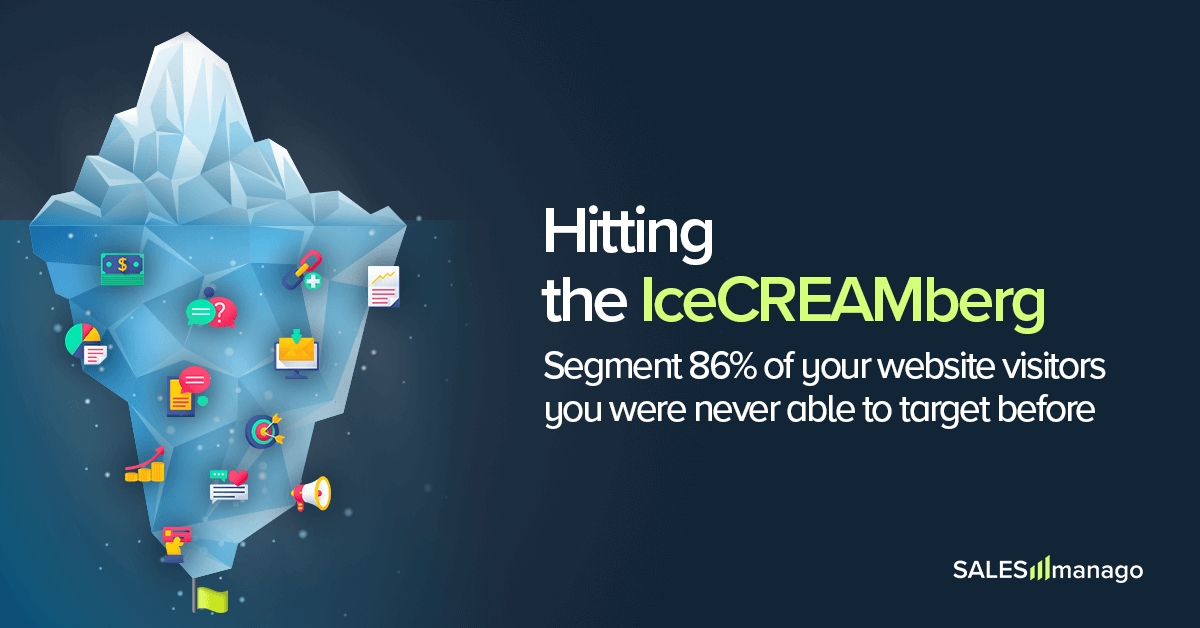

![[New Feature] Unlock Deep Behavioral Personalization with Product Collections](https://blog.salesmanago.com/wp-content/uploads/2024/03/1-3.png)



![[New Feature] Shine the light on your hidden visitors with Spotlight](https://blog.salesmanago.com/wp-content/uploads/2024/04/1-9-1024x536.png)
